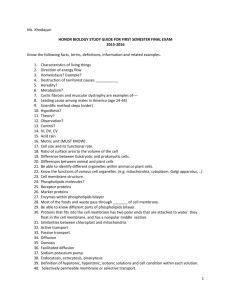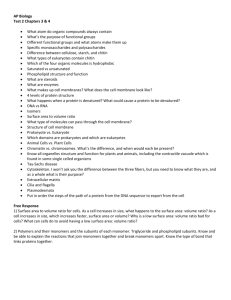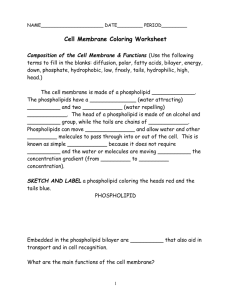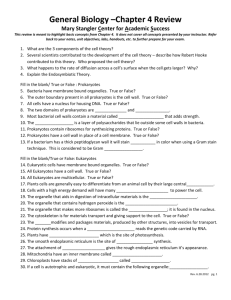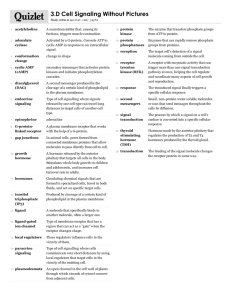Potential Assessment Questions: Cell/Cell Membrane Structure
advertisement
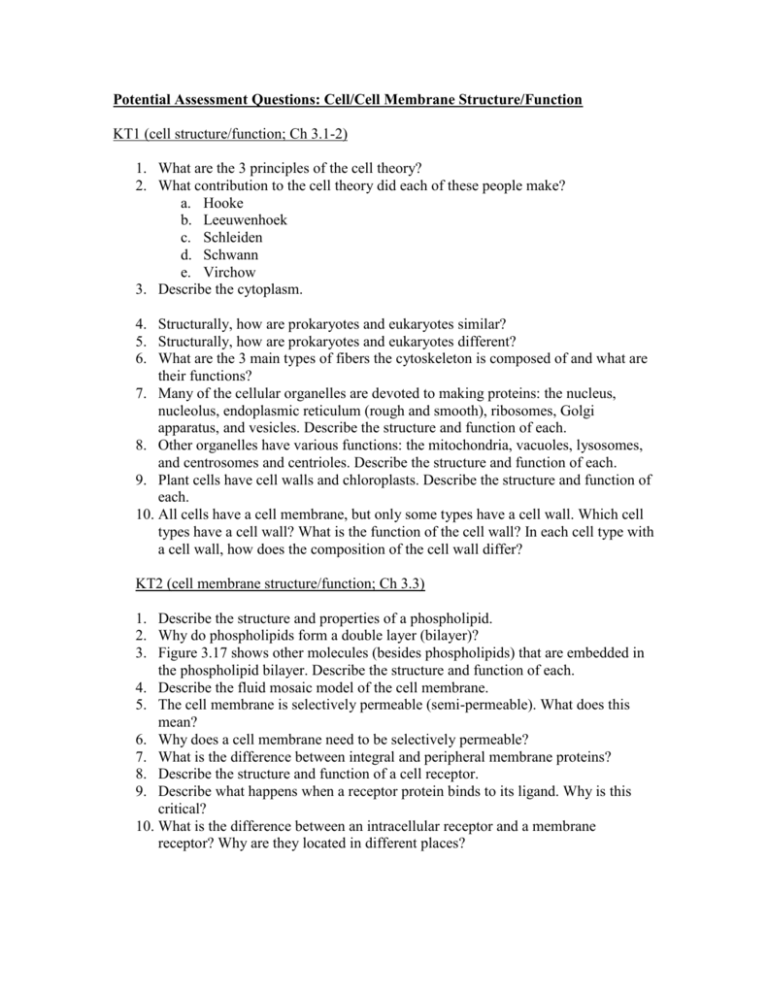
Potential Assessment Questions: Cell/Cell Membrane Structure/Function KT1 (cell structure/function; Ch 3.1-2) 1. What are the 3 principles of the cell theory? 2. What contribution to the cell theory did each of these people make? a. Hooke b. Leeuwenhoek c. Schleiden d. Schwann e. Virchow 3. Describe the cytoplasm. 4. Structurally, how are prokaryotes and eukaryotes similar? 5. Structurally, how are prokaryotes and eukaryotes different? 6. What are the 3 main types of fibers the cytoskeleton is composed of and what are their functions? 7. Many of the cellular organelles are devoted to making proteins: the nucleus, nucleolus, endoplasmic reticulum (rough and smooth), ribosomes, Golgi apparatus, and vesicles. Describe the structure and function of each. 8. Other organelles have various functions: the mitochondria, vacuoles, lysosomes, and centrosomes and centrioles. Describe the structure and function of each. 9. Plant cells have cell walls and chloroplasts. Describe the structure and function of each. 10. All cells have a cell membrane, but only some types have a cell wall. Which cell types have a cell wall? What is the function of the cell wall? In each cell type with a cell wall, how does the composition of the cell wall differ? KT2 (cell membrane structure/function; Ch 3.3) 1. Describe the structure and properties of a phospholipid. 2. Why do phospholipids form a double layer (bilayer)? 3. Figure 3.17 shows other molecules (besides phospholipids) that are embedded in the phospholipid bilayer. Describe the structure and function of each. 4. Describe the fluid mosaic model of the cell membrane. 5. The cell membrane is selectively permeable (semi-permeable). What does this mean? 6. Why does a cell membrane need to be selectively permeable? 7. What is the difference between integral and peripheral membrane proteins? 8. Describe the structure and function of a cell receptor. 9. Describe what happens when a receptor protein binds to its ligand. Why is this critical? 10. What is the difference between an intracellular receptor and a membrane receptor? Why are they located in different places?



